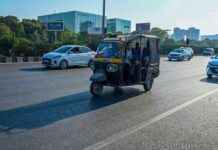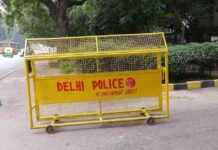Mumbai Rains: Red Alert Issued as Torrential Downpour Shuts Public Schools
The bustling city of Mumbai was taken by surprise on Wednesday as a torrential downpour hit the city, marking the tail end of the monsoon season. The unexpected heavy rainfall resulted in widespread water-logging and severe disruptions in train services, roadways, and air traffic, prompting authorities to issue urgent warnings and implement emergency measures to ensure the safety of residents.
Red Alert and Emergency Measures
The Indian Meteorological Department (IMD) swiftly issued a red alert until 8:30 am on Thursday, signaling the potential for extremely heavy rainfall and dangerous conditions throughout the city. This high-level warning prompted the city administration to declare a holiday for all public schools in Mumbai, acknowledging the severity of the weather situation and prioritizing the safety of students and staff.
As the city grappled with the deluge, various areas reported significant water-logging, with the Eastern suburbs bearing the brunt of the heavy rainfall. Locations such as Mankhurd Fire Station, Turbhe Municipal School, Maravali Municipal School, Chembur, and Ghatkopar experienced substantial rainfall, leading to challenging conditions for residents and commuters alike. In the Island City, notable rainfall was recorded at the Municipal Head Office and Colaba Pumping Station, further exacerbating the water-logging situation across Mumbai.
Impact on Transportation
The heavy rainfall had a profound impact on the city’s transportation systems, causing widespread disruptions and delays. The suburban local trains, known as the lifeline of Mumbai, faced significant setbacks on the Central Railway line, with delays of up to an hour reported. Waterlogged tracks at key stations like Kurla, Bhandup, and Vikhroli resulted in trains bypassing stops at Nahur, Kanjurmarg, and Vidyavihar, further complicating the already congested situation.
The Western Railway also faced challenges, leading to the cancellation of trains and overcrowding at major stations such as Churchgate. This disruption rippled through the city’s commuter network, impacting thousands of passengers who rely on the railway system for their daily commute. Additionally, Mumbai’s Chhatrapati Shivaji Maharaj International Airport experienced operational difficulties due to the adverse weather conditions, with several flights facing delays, go-arounds, and diversions.
Emergency Response and Precautionary Measures
In response to the red alert issued by the IMD, city officials sprang into action to mitigate the impact of the torrential downpour. Assistant Commissioners were tasked with ensuring the presence of Executive Engineers in ward control rooms, while the Chief Engineer of the Storm Water Drainage department oversaw the operational readiness of dewatering pumps and field staff. These proactive measures aimed to alleviate flooding and enhance the city’s preparedness for any further rainfall.
As a precautionary measure, a school holiday was declared for all public schools in Mumbai and its suburbs for the following day, urging residents to stay indoors unless absolutely necessary and to stay updated on the latest developments from local authorities. This decision prioritized the safety of students and school staff, recognizing the challenges posed by the inclement weather conditions and the need for caution during such emergencies.
Impact on Daily Life
The torrential downpour not only disrupted transportation systems and public services but also had a significant impact on the daily lives of Mumbai residents. Many individuals found themselves stranded due to water-logged streets and impassable roads, leading to delays in reaching their destinations and causing inconvenience for those trying to navigate the city amidst the heavy rainfall.
Businesses and commercial establishments also faced challenges, with many experiencing disruptions in operations and reduced foot traffic due to the adverse weather conditions. The heavy rainfall posed a threat to infrastructure and public safety, highlighting the importance of preparedness and resilience in the face of natural disasters and emergencies.
Climate Change and Urban Planning
The unprecedented rainfall in Mumbai raised questions about the city’s vulnerability to extreme weather events and the need for robust urban planning strategies to mitigate the impact of climate change. With climate scientists predicting an increase in the frequency and intensity of rainfall in the region, it becomes imperative for authorities to prioritize sustainable infrastructure development and disaster management measures to safeguard the city and its residents from future crises.
Investments in flood control systems, stormwater drainage, and resilient infrastructure can help Mumbai better cope with the challenges posed by heavy rainfall and water-logging, ensuring the city’s long-term sustainability and resilience in the face of changing climatic conditions. By incorporating climate-resilient practices into urban planning and development initiatives, Mumbai can enhance its capacity to withstand extreme weather events and protect the well-being of its population.
Conclusion
The torrential downpour that engulfed Mumbai served as a stark reminder of the city’s vulnerability to extreme weather events and the urgent need for proactive measures to address the challenges posed by climate change. As authorities continue to grapple with the aftermath of the heavy rainfall and its impact on daily life, it is essential for Mumbai to prioritize sustainable urban planning, resilient infrastructure development, and effective disaster management strategies to build a more climate-resilient city for the future.




















